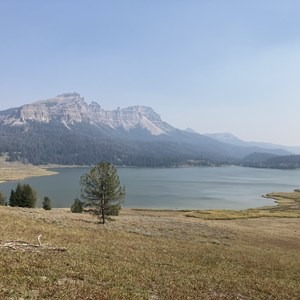The Continental Divide National Scenic Trail spans nearly 3,100 miles across 5 states from Mexico to Canada, traversing a vast array of different environments and landscapes along the way. The CDT can be completed as a single thru-hike that will take 4 to 6 months, or by section-hiking smaller segments. The Wyoming portion of the CDT features nearly 550 miles of incredibly diverse terrain. You’ll pass through the open desert plains of the Great Basin, the craggy ice carved peaks of the Wind River Range, and the steaming geysers and volcanic activity of Yellowstone National Park. In this guide we’ll take a closer look at Wyoming Section 18.
Wyoming Section 18 begins at Wind River Pass and Highway 26. From here hikers can hitch into the town of Dubois if needed. The trail takes off from the highway and passes under a stunning large wall-like rock formation during this next stretch. You’ll then pass Upper and Lower Jade Lakes before descending down to Upper Brooks Lake.
The trail then enters the Bridger Teton Wilderness. As you descend some switchbacks you’ll notice that this stretch of trail has been used heavily by horses. In fact much of Section 18 suffers from heavy horse use making the trail tread less than ideal for hikers in places.
You’ll descend down to Cub Creek, then have a short but steep climb for a mile. The trail then tops out before heading down to the South Buffalo Fork. This is a proper river that must be forded. In early season the water levels may be high, use caution.
You’ll then have half a mile of flat, easy hiking through the beautiful river valley. There is good camping throughout here. You’ll then turn right (easy to miss) and ascend out of the valley. Great views are to be had as you ascend, including those of some fascinating rock formations on the opposite side of river.
You’ll continue ascending slightly, passing through some meadow areas and then descending through a burn area. The trail passes beside a small lake, then a (locked) cabin. The trail crosses over the Soda Fork (another potentially high river crossing) before paralleling near the river and heading downstream. You’ll then reach the North Buffalo Fork (another proper river) which marks the end of Section 18.











Comments
Sign In and share them.